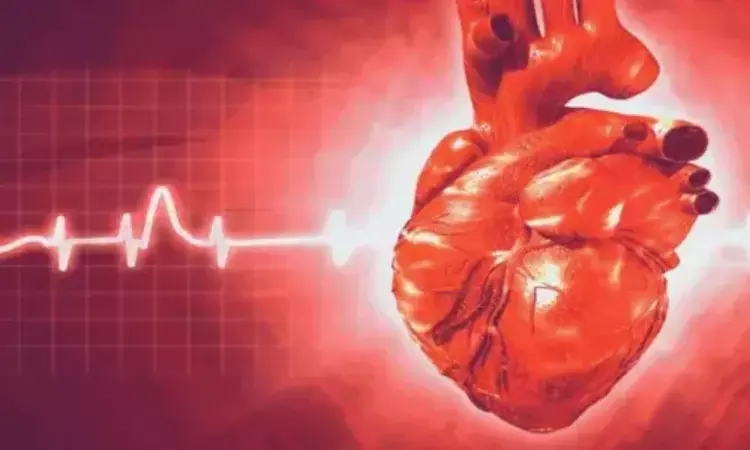- Home
- Medical news & Guidelines
- Anesthesiology
- Cardiology and CTVS
- Critical Care
- Dentistry
- Dermatology
- Diabetes and Endocrinology
- ENT
- Gastroenterology
- Medicine
- Nephrology
- Neurology
- Obstretics-Gynaecology
- Oncology
- Ophthalmology
- Orthopaedics
- Pediatrics-Neonatology
- Psychiatry
- Pulmonology
- Radiology
- Surgery
- Urology
- Laboratory Medicine
- Diet
- Nursing
- Paramedical
- Physiotherapy
- Health news
- Fact Check
- Bone Health Fact Check
- Brain Health Fact Check
- Cancer Related Fact Check
- Child Care Fact Check
- Dental and oral health fact check
- Diabetes and metabolic health fact check
- Diet and Nutrition Fact Check
- Eye and ENT Care Fact Check
- Fitness fact check
- Gut health fact check
- Heart health fact check
- Kidney health fact check
- Medical education fact check
- Men's health fact check
- Respiratory fact check
- Skin and hair care fact check
- Vaccine and Immunization fact check
- Women's health fact check
- AYUSH
- State News
- Andaman and Nicobar Islands
- Andhra Pradesh
- Arunachal Pradesh
- Assam
- Bihar
- Chandigarh
- Chattisgarh
- Dadra and Nagar Haveli
- Daman and Diu
- Delhi
- Goa
- Gujarat
- Haryana
- Himachal Pradesh
- Jammu & Kashmir
- Jharkhand
- Karnataka
- Kerala
- Ladakh
- Lakshadweep
- Madhya Pradesh
- Maharashtra
- Manipur
- Meghalaya
- Mizoram
- Nagaland
- Odisha
- Puducherry
- Punjab
- Rajasthan
- Sikkim
- Tamil Nadu
- Telangana
- Tripura
- Uttar Pradesh
- Uttrakhand
- West Bengal
- Medical Education
- Industry
Cardiac rupture with high mortality a rare complication of Takotsubo syndrome among elderly females: Study

USA: A comprehensive systematic review has shed light on cardiac rupture (CR) as a life-threatening outcome of Takotsubo syndrome (TS). The review compiled and analyzed the existing literature to better understand this rare but serious complication of TS.
The study, published in the International Journal of Cardiology, stated that cardiac rupture related to Takotsubo syndrome is a rare complication associated with high mortality and affects elderly females, especially of White/Caucasian or East Asian/Japanese descent, presenting with an apical ballooning pattern and anterior or lateral ST-segment elevation.
"Although data is limited and there is a need for additional prospective studies, the awareness of this life-threatening complication is crucial to early identify high-risk patients," the researchers wrote.
Takotsubo syndrome is a reversible cause of heart failure; however, a minority of patients can develop severe complications, including cardiac rupture. Antonio Abbate, University of Virginia, Charlottesville, VA, United States, and colleagues analyzed case reports of CR related to TS, detailing patient characteristics to uncover risk factors and prognosis for this severe complication.
For this purpose, they conducted a systematic search of online databases to identify case reports of patients with TS complicated by CR from inception to October 2023.
The researchers reported the following findings:
- Forty-four subjects (40 females; 4 males) with a median age of 75 years, of White/Caucasian (61%) or East Asian/Japanese (39%) ethnicity.
- An emotional trigger was present in 34% of subjects, and an apical ballooning pattern was observed in all cases (100%).
- ST-segment elevation was reported in 93% of 42 cases, with the anterior myocardial segments (88%) being the most compromised, followed by lateral (62%) and inferior (33%) segments.
- The median time to cardiac rupture was 48 hours since admission, with the left ventricular free wall 57% being the most frequent site of perforation.
- In 36% of cases, surgery was attempted, and 64% of patients did not survive.
The researchers suggest that while cardiac rupture is uncommon in Takotsubo syndrome, healthcare providers should remain vigilant regarding this serious complication to promptly identify high-risk patients. Early detection of cardiac rupture, timely decompression of cardiac tamponade if present, and prompt consideration of cardiac surgery if necessary may reduce mortality in these patients confronting a critical outcome.
"The complete understanding of the pathophysiological mechanism behind cardiac rupture in Takotsubo syndrome remains elusive, and there is a need for additional research to identify ways to reduce mortality rates in this population," the researchers concluded.
Reference:
Denicolai, M., Morello, M., Del Buono, M. G., Sanna, T., Agatiello, C. R., & Abbate, A. (2024). Cardiac rupture as a life-threatening outcome of Takotsubo syndrome: A systematic review. International Journal of Cardiology, 132336. https://doi.org/10.1016/j.ijcard.2024.132336
Dr Kamal Kant Kohli-MBBS, DTCD- a chest specialist with more than 30 years of practice and a flair for writing clinical articles, Dr Kamal Kant Kohli joined Medical Dialogues as a Chief Editor of Medical News. Besides writing articles, as an editor, he proofreads and verifies all the medical content published on Medical Dialogues including those coming from journals, studies,medical conferences,guidelines etc. Email: drkohli@medicaldialogues.in. Contact no. 011-43720751


